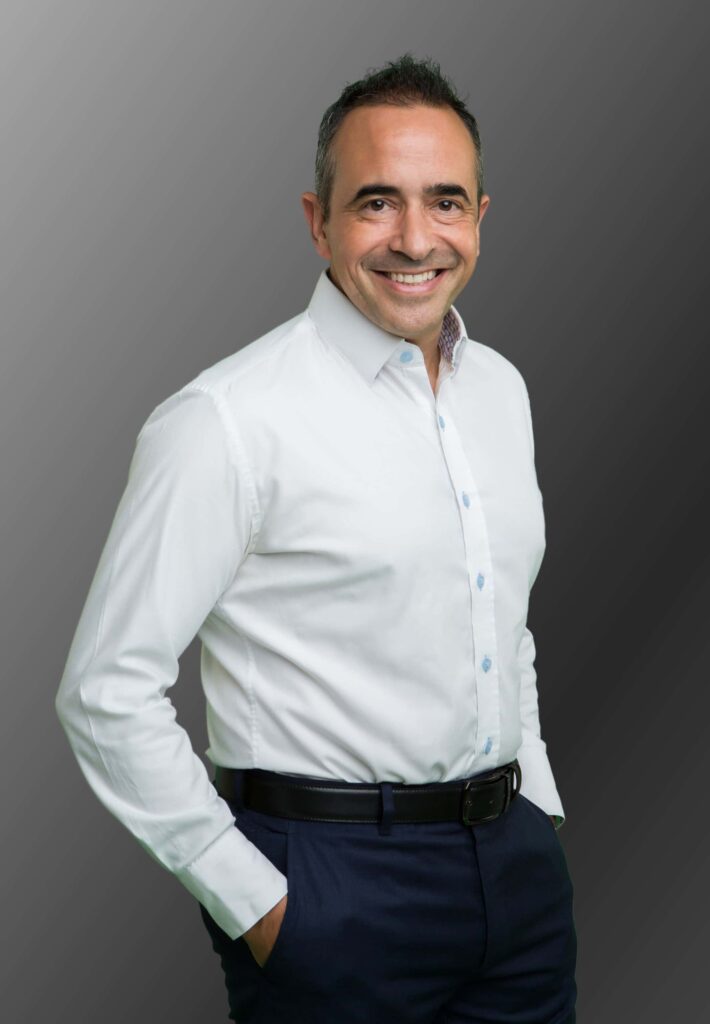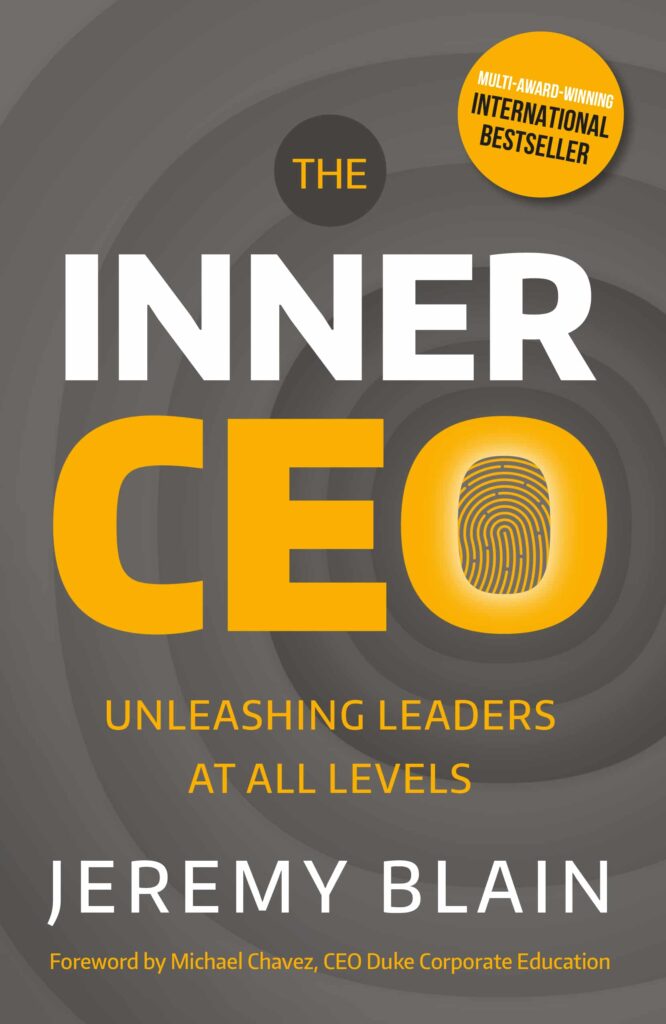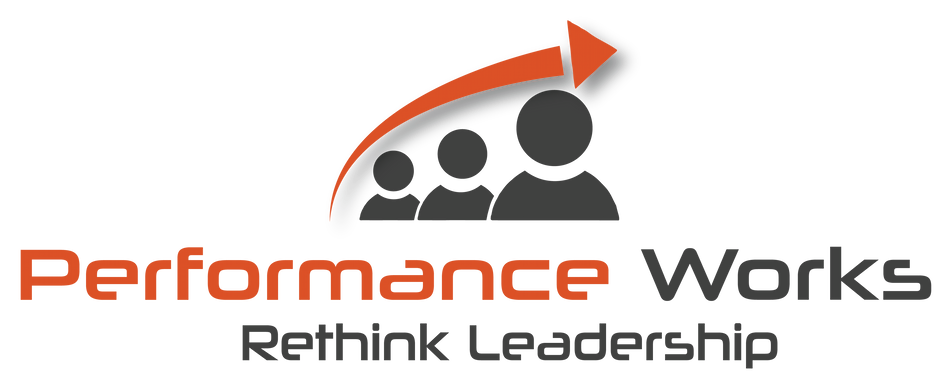Jeremy Blain believes that education, corporate learning, leadership and business transformation a disciplines but not an industry. His work involves working with various industries. in the years he has been in his career his focus is on how to build the next generation. According to him, that is not just in terms of those coming into the organization. In an interview with CIO Global, he shares his beliefs and why he took a jump from the retail industry to corporate training. We at CIO Global, are proud to have Jeremy Blain in the Business Heroes: CEOs to Watch, 2023.
CIO Global: Thank You for doing this Jeremy. A switch from retail to corporate training. Why and how has the journey been?
Jeremy Blain: According to me, it’s the next generation of leaders that we need to fuel the future within the organizations that are evolving, particularly now in these transformational times. So having that passion to start with, I moved out of the retail industry into consulting around corporate education, corporate training, executive coaching, and more operational consulting. So for me, it was always important to be focused on the how-to, not the what. So strategic consulting didn’t attract me so much. So being a more operational consultant, I can get involved with getting to action, measuring from day one.
CG: What is that one key takeaway you have got as a CEO?
JB: So in the organization where I became CEO first, which was a French learning organization, is that I think one of the key things was it was being so client-focused in what I did. So it was around having the customer at the heart of what we did, doing research whereby we could inform them and provide insights for them for their strategies, and then supporting them in ways that we delivered our promise, not just words if you like. So it’s walking the talk was key. I did this internationally as one of the few people actually in the business who did it successfully on an international level. So that’s why I then rose to CEO managing or setting up the new business unit for Asia Pacific. And then when I left that company, I set up my organization focusing on my love, which is how we transform leaders to be ready for the future now and transform them in digital ways with the workforce in mind and their learning journey itself.
CG: Can you please throw light on your milestones as a CEO?
JB: Well, the things that I’m most, most happy about are the achievements around some of the new things that we’re bringing to market, but also how we’re impacting the communities within which we serve. So I have a small business, Performance Works is a small business. But we I made this as we started the company, I made this certainly something that I wanted to do to contribute a proportion of my profits to the communities within which I served, and then constantly do that. So for example, some of the other achievements like writing a book, having a podcast, and receiving awards, all come with, from my perspective, an opportunity to give back. So my podcast, which is now pretty popular, is called the Rethink Leadership podcast. For every single episode, we make that in aid of a charity around the world, which is chosen by my guests, and I donate money to that instead of a fee to the guest. And I kind of live and breathe that purpose. So I’m proud of that. When I wrote my book about leading at all levels, called The Inner CEO Unleashing Leaders at All Levels, I realized that there wasn’t a blueprint for distributed leadership, something we’re talking about a lot now. So to be the first person in the world to write a book on that, I’m extremely proud of it. And as a global authority on empowered working, then that has helped fuel the business.

This year I won the best of global awards from the independent newspaper in the UK, and their business magazine business reporter, as a small business doing big things internationally, across the world in changing the game around leadership. And that’s the other thing I’m proud of, is that we invest in research every single year to upgrade our learning products.
-Jeremy Blain
CG: In your opinion, what is the most significant trend shaping your industry this year?
JB: It is, for me, the blend of the ongoing digital transformation, and workforce transformation, of which some leaders are not fully aware, for example, the coming together of the permanent and the independent workforce as a more formalized part of your employee set, and the leaders journey themselves. So particularly digital, it’s that digital readiness, ongoing digital transformation, not just about artificial intelligence, but how we as organizations and leaders understand this so that we can start to think about how we use the next generation of innovations like Web3 and being secured also by blockchain to innovate at levels that we couldn’t dream of before and to provide and produce solutions that we don’t even know exist yet. And in my experience, this is something that leaders are lacking. In some ways, I think leaders are going on the most steep learning journey, and some leaders are either not ready or willing for that.
CG: All of us have creativity; the difference is how we use it. How do you foster innovation and creativity in your organization which has several minds brainstorming?
JB: For me, it’s about being very empowering. It provides a psychologically safe environment whereby my team can step up, A, give feedback to me about direction or anything, and tell me when I’m wrong, which is what I need sometimes. But specifically, to be able to experiment and think about what can we do differently for our clients that would add significant value and innovate behind that. And digitally, we’re able to do that well now. So we can create digital twins of our kind of modelling ideas, for example. So we can create all of this almost like a test model in the cloud, if you like, using different technologies like no-code platforms or low-code platforms. And then we can shape them, do the testing in there, and then we can involve our customers in that too. So that helps me from a perspective of how we upgrade our research every year. How do we upgrade our consulting and learning solutions every year as well with things that we need and the creation of new models that we might need and new ways to deliver learning, which is fantastic from an innovation point of view and something that my team have really kind of pulled the stops out of. So for example, out of a hackathon that we did internally, our leadership exploration days came out and they have been probably the most popular thing where we take leadership teams out of their comfort zone and their environment to different industries. We bring leaders who are going through the same problems or challenges or even opportunities as them so that they can hear a different perspective, and we challenge them in other ways as well. I’m not going to give too much away.
CG: Every leader has a philosophy which is their guide. Can you throw light on your leadership philosophy that guides your decision-making process?
JB: For me, it is about the client being at the heart of anything that we do and my employees my collaborators and my partners. I operate a distributed business. I have close staff that work with me, of course, every day, but also collaborators who contribute to everything that we do worldwide. So the decision-making is around what are the big things that would benefit our clients, but also what are the things that I can do to help my employees, A, stay loyal, B, service our customers with huge engagement and passion, and three, to allow them to be leaders in their rights at whatever they are doing in my organization and take ownership for their decisions and be autonomous while working with a team. That helps me because I’m able to focus more strategically. I can then go and support my team more as a coach and as a guide, and we are all in it together. That has meant that, for me, my other philosophy is I don’t want a hierarchical ladder within the organization, so it is very flat and everybody has the same voice when we’re around the table, and regular feedback sessions help that. So being close to people, whether it’s customers or employees, is key.
My business strategy, for me, that’s at the heart of what I do. I’m purpose-driven. So, for example, I told you about the podcast before and how I contribute 12% of my profit, actually, every year to good causes locally and globally, but also I have set up a new social enterprise called Diverse IT Talent, which is around changing misconceptions around careers in modern business and technology to inspire and encourage the next generation of leaders, technical experts, technology wizards, and innovators, and that is all about putting back into the community. So I’m starting that in the UK with a partner and then we’ll be going global with it.
-Jeremy Blain

CG: The business world is quite intriguing yet challenging. What challenges have you encountered as CEO and how did you overcome them?
JB: Well, the challenges I have encountered are like anyone. I think partly, actually, the challenges are not just business challenges, but their challenges personally. How do you cope with the amount of work that leaders have on right now? I have a model that is called Triple Now.
It’s around the digital workforce and the leadership, all of those transformations happening at once to show the scope and scale of what we’re all dealing with. So for me, it’s been really important to balance my work life and receive feedback from people, including my wife, not just people at work, when it looks like it’s getting on top of me because that’s when I start to make poor decisions. But from a business perspective, I encountered the challenges that many do about strategy, and how we implement it. That really is one of the biggest challenges is the successful implementation of strategy, be it a digital strategy, be it a new product or a service solution strategy, and making it happen, refining it and making it work as we intended or even better than we intended. We know that implementations failover 60% of the time in strategy terms, and it is hard. It is a challenge to do it because you have to have, as a leader, your eyes to the sky, but your feet have to be firmly on the ground and making sure that you’re rolling your sleeves up, doing that with everybody, particularly, as I said before, because we’re flattening the hierarchy. So I’m not going to sit in my ivory tower and think, right, all you lot do it, have to be there, doing it with them.
Actually, the future is a collective understanding of what we’re doing now, but also a collective, a collective and collaborative discussion internally about what are the things that we can do differently, which are focused on leadership development and leadership transformation, but have a strong tie to digital transformation and what’s happening with the workforce. So that strategy will, will, will stay the same. But what I suspect is, is that it will become more purpose-driven. So as the social enterprise takes off, then I will divert probably more of our talent and time towards that as much as, the business itself, but we will continue delivering the promise that we made to do annual research that informs how we upgrade our content and develop new content and invest in that year on year that is going to continue.
-Jeremy Blain
CG: The JB words of wisdom for aspiring entrepreneurs.
JB: Believe in yourself, have confidence in yourself. Imposter syndrome is something that I’ve had quite a lot throughout my career and always tried to prove myself. And that’s something that I’ve kind of got over now, but that can get in the way sometimes. So I think it’s, it’s, you know, it’s confident and has that belief, leave your ego at the door because in this day and age, human-centered leadership is, is the gateway to great collaboration, communication, loyalty from people, whether it’s customers and whether it’s, it’s your, it’s your teams. So that’s another key thing. And the other thing is don’t forget to keep learning because, in my experience working with leaders, some leaders have forgotten how to learn. And yet the steepest learning curve out there is possibly for some leaders when you consider what they don’t know about digital transformation, cyber security, what they don’t know about the trends in, the workforce, how we evolve our hybrid working or distributed working models, et cetera. So keeping, keeping hungry for learning is a, is another thing. And the final thing is, is don’t, don’t be afraid to experiment and fail fast, fail often and fail forward, which is about learning from that, and involving others in that process so that can help you speed up when you need to, but it also can help you slow down to speed up when you’ve tested some of those things and the final thing I would add to that is to model the new ways of working, which are emerging. So digital is not just about the tool or a piece of technology. It’s about digital ways of working. So how do we embrace, for example, agile working across the business, even at the leadership level, how do we use methods and skills like data visualization and data analytics to help make decisions at all levels? How do we use processes like design thinking to move through experimentation or projects much quicker with others?
So leadership, transformational learning, journeys for leaders, executive coaching, transformational consulting activities, always with new case studies, new ways of thinking, new models, some of which I’ve had to create myself because nothing exists yet. And that means I’m learning slightly quicker than some of my customers in this in leadership terms as a leader myself. But I find that gratifying.
-Jeremy Blain

